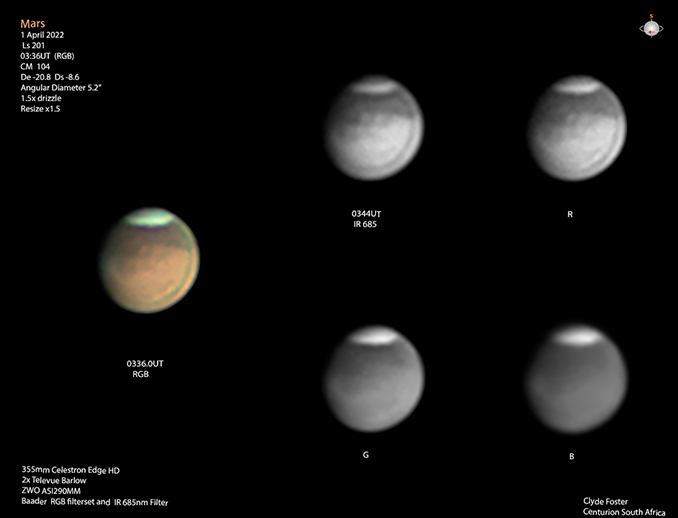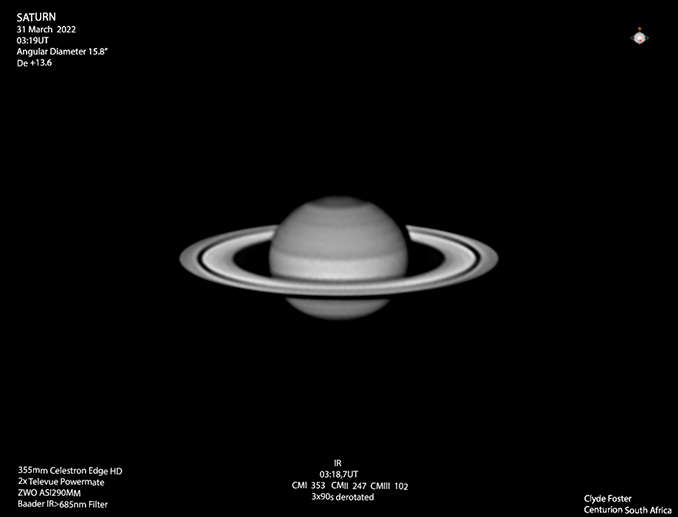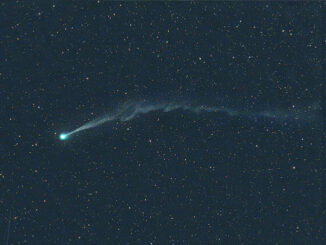
The next two months or so promises to be an exciting one if you enjoy viewing close conjunctions between the major planets – and who doesn’t! As April turns into May there’s the big one, as Venus and Jupiter square up to each other in the pre-dawn twilight. However before that, observers can enjoy a coming-together of the red planet Mars and the ringed-wonder Saturn.
Between now and 7 April, Mars and Saturn lie within 1.5 degrees of each other in the pre-dawn south-eastern sky. On the morning of 4 April, Saturn is 39 arcminutes east of Mars and closes to 19 arcminutes for their closest approach the following morning, 5 April. Saturn lies above Mars. Mars shines at magnitude +1, a long way off an opposition brilliance we can look forward to this December, while Saturn is marginally brighter at magnitude +0.9.

There’s the added bonus of Venus’ brilliant magnitude –4.3 ‘morning star’ appearing around seven degrees or so to the east of Mars and Saturn. Jupiter is not yet in the picture, though it will be towards the end of April, ready for its great conjunction with Venus.
One disappointing caveat to Mars and Saturn’s conjunction and Venus and Jupiter’s coming conjunction is that both events take place with the planets placed low over the morning horizon, so you may need to do a little research to find a suitable observing site that has a good vista from the east around to the south-east.

On 5 April, from the south of England the planetary pair are just over sixdegrees above the east-south-east to south-east horizon at the beginning of civiltwilight (which occurs at about 5.50am BST), increasing to an elevation of nearly11 degrees by sunrise just before 6.30am BST. The farther north you live the lower in the sky Mars and Saturn are. From Scotland, the pair are an altitude of barely three degrees at 5.55am BST, the beginning of civil twilight.
The planet’s unhelpful altitude across the UK will take some of the lustre off the event, though it will be interesting still to compare their contrasting hues, Mars sporting its familiar ruddy orange coloration and Saturn a creamy cast. If you own a pair of binoculars you’d be wise to have them handy as you’ll get a better view, and any haze or thin cloud present over the horizon may make it harder than you think to spot the planets with the naked-eye in the gathering twilight.




